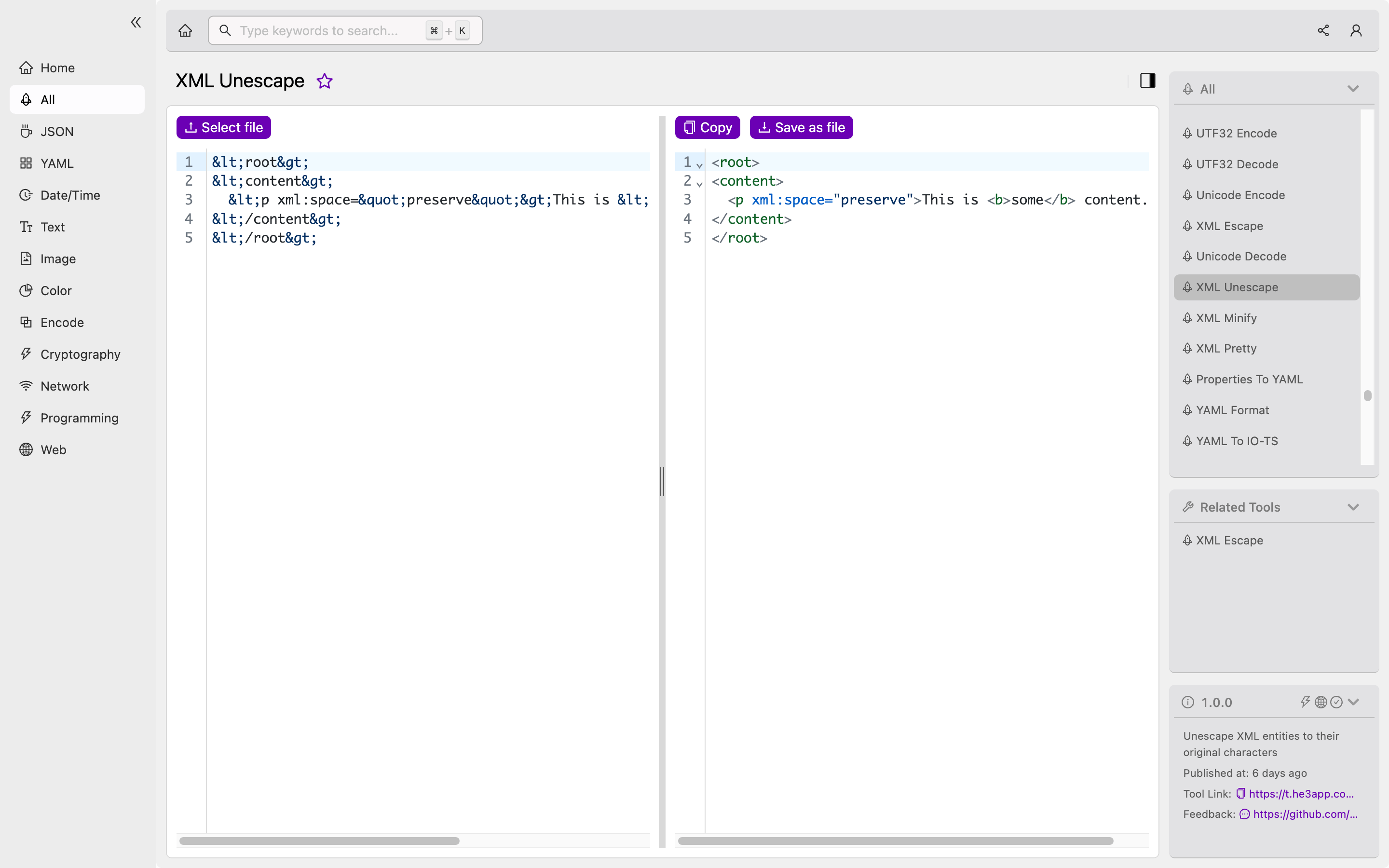Understanding XML Unescape: A Guide for Developers
XML Unescape is a tool that makes it easy to decode XML data encoded with entities or escape sequences. Developers can use this tool to transform encoded text back to its original form, making it more readable and usable. This article will explain the concept of XML Unescape, how it works, scenarios, key features, misconceptions, and FAQs.
What is XML Unescape?
XML Unescape refers to the process of decoding XML data that has been encoded with entities or escape sequences. Escape sequences are a way to represent special characters in XML data without breaking the markup structure. These escape sequences are sequences of characters that start with an ampersand (&) and end with a semicolon (;). For instance, ”<” represents the less-than character (<), while ”>” represents the greater-than character (>).
On the other hand, entities are used to represent characters and symbols that cannot be represented by ASCII or UTF-8 encoding. They are a set of predefined codes that can be used to represent special characters, such as the Euro sign (€). For instance, ”€” represents the euro sign.
How Does XML Unescape Work?
The XML Unescape process involves replacing the encoded escape sequences or entities in the XML data with their corresponding characters. Developers can use XML Unescape tools or libraries to automate this conversion process. Here are some examples of how to use XML Unescape in Python:
import xml.sax.saxutils as saxutils
escaped = "<Hello>"
unescaped = saxutils.unescape(escaped)
print(unescaped) # prints "<Hello>"Or you can use XML Unescape tool in He3 Toolbox (https://t.he3app.com?ib48 ) easily.

In the above example, the ‘saxutils’ library’s ‘unescape’ function is used to decode the ’<’ and ’>’ escape sequences in the ‘escaped’ string.
Scenarios of using XML Unescape
XML Unescape is useful in many scenarios, including:
- Parsing XML data: XML Unescape can be used to decode XML data before parsing it, making it more readable and easier to parse.
- Debugging: If you encounter XML data that is encoded with escape sequences or entities, you can use XML Unescape to decode it and see the original data.
- Data exchange: If you need to exchange XML data with other systems or APIs, you may need to encode and decode the data to ensure that it is correctly formatted and readable.
Key Features
Here are some key features of XML Unescape:
- Decodes escape sequences and entities in XML data.
- Automated process that saves time and effort.
- Improves data readability and usability.
- Integrates with various programming languages and tools.
Misconceptions and FAQs
Misconception 1: XML Unescape can only decode XML data encoded with escape sequences.
XML Unescape can decode both escape sequences and entities in XML data. It supports a wide range of entities, including Unicode characters.
Misconception 2: XML Unescape modifies the original XML data.
XML Unescape does not modify the original XML data. Instead, it returns a decoded copy of the original data.
FAQ 1: Is XML Unescape only for developers?
XML Unescape is primarily used by developers, but it can be used by anyone who works with XML data.
FAQ 2: Can XML Unescape decode all escape sequences and entities?
XML Unescape supports a wide range of escape sequences and entities, but it may not support all of them.
Conclusion
XML Unescape is a useful tool for developers who work with XML data encoded with escape sequences or entities. It decodes the encoded data, making it more readable and usable. By understanding the concept of XML Unescape, how it works, scenarios, key features, misconceptions, and FAQs, developers can use this tool efficiently and effectively.
References:
